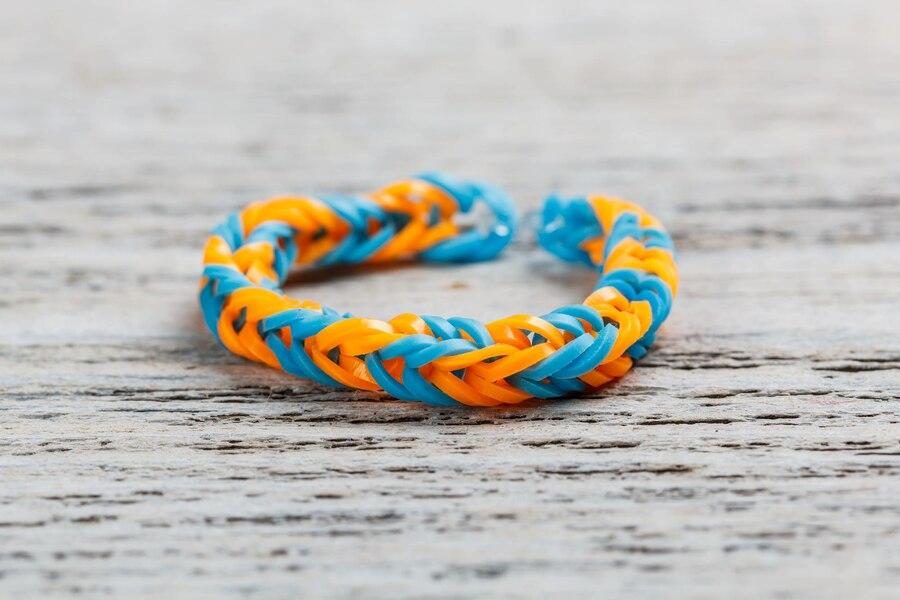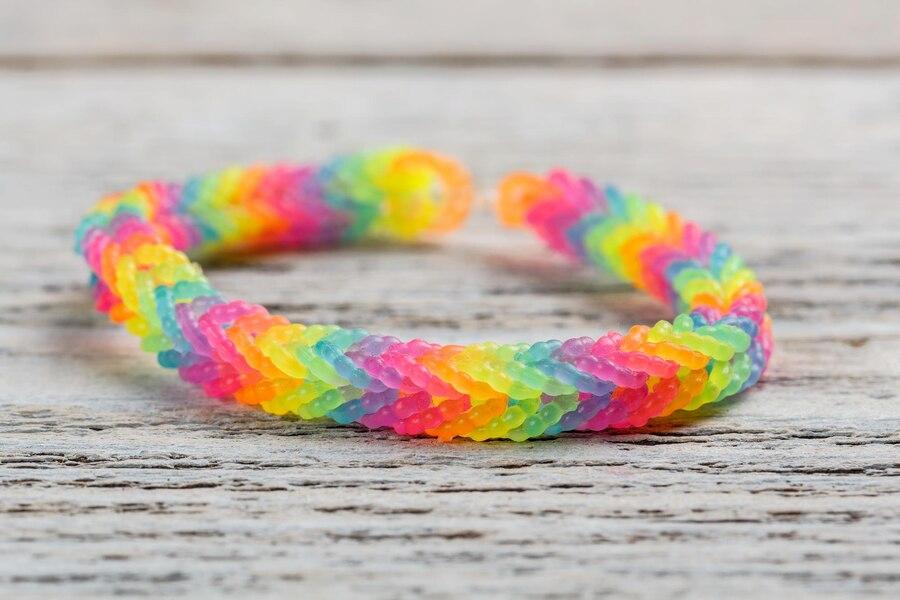Elastic bracelets are popular due to their flexibility and ease of use. However, over time, these bracelets can wear out and break. Whether it’s a treasured accessory or a simple fashion piece, a broken elastic bracelet doesn’t have to be discarded. In this article, we’ll explain common issues with elastic bracelets, how to fix them, and advanced techniques for repair. With the right methods, you can restore your bracelet to its original beauty.

Understanding Elastic Bracelets
Elastic bracelets are simple yet versatile pieces of jewelry that use a stretchy cord to hold beads or charms together. These bracelets are beloved for their ease of wear, as they easily slip on and off without the need for clasps or closures. Elastic bracelets are ideal for casual and everyday wear, but their simplicity can also make them prone to certain issues like stretching or breaking.
Elastic cords used in bracelets come in various thicknesses and materials, such as silicone or polyester. The type of elastic cord used often determines the bracelet’s durability and stretch capacity. Over time, repeated wear, stretching, and exposure to elements like water or sunlight can cause the elastic to weaken and eventually snap. Key elements to consider when working with elastic bracelet include:
Common Issues with Elastic Bracelets
Although elastic bracelets are convenient and stylish, they come with their own set of common issues. If not handled or stored properly, these problems can cause the bracelet to wear out quickly. Knowing what to look out for can help you prevent or identify issues before they become major problems. Here are some common problems:
Methods for Fixing Broken Elastic Bracelets

1.If your elastic bracelet breaks, don’t worry—there are several easy ways to fix it. With just a few tools and some patience, you can repair your bracelet and make it as good as new. Below are the basic steps for fixing a broken elastic bracelet:
2.Gather your tools: You’ll need a new elastic cord, scissors, and a bead stopper or tape to keep the beads from falling off while you work.
3.Remove old elastic: If any beads remain on the broken elastic, carefully slide them off and set them aside. Remove all remnants of the old elastic.
4.Measure new elastic: Measure a new length of elastic cord, making sure to cut a piece that’s at least 3-4 inches longer than the circumference of your wrist. This gives you extra length for tying knots.
5.Re-string the beads: Slide the beads onto the new elastic cord, following the original design or adding your own creative touch. Use a bead stopper or tape on one end of the cord to prevent beads from sliding off.
6.Tie secure knots: Once all beads are in place, tie a secure knot to close the bracelet. A surgeon’s knot or square knot is ideal for extra strength. To ensure durability, you can add a drop of clear jewelry glue to the knot.
7.Trim excess elastic: After the glue has dried, trim the excess elastic close to the knot, being careful not to cut too close to the knot itself.
8.Test the bracelet: Gently stretch the bracelet to ensure the knot holds and the beads are secure. Your bracelet is now ready to wear again!
Advanced Techniques for Bracelet Repair
For more complex repairs or if you want to extend the life of your elastic bracelet, advanced techniques can be helpful. These methods involve using special tools or adding extra steps to enhance the durability and look of your bracelet.
Conclusion
Fixing a broken elastic bracelet is a simple and rewarding task. With the right materials and methods, you can restore your bracelet and give it new life. Understanding the common issues with elastic bracelets, such as stretching and weak knots, can help you take preventative measures and ensure your bracelet lasts longer. Whether using basic or advanced techniques, bracelet repair can be easy and fun. So, the next time your bracelet breaks, don’t toss it away—repair it with confidence!
FAQs
How can I prevent my elastic bracelet from breaking?
To prevent your elastic bracelet from breaking, avoid overstretching it, especially when putting it on or taking it off. Remove the bracelet before activities like swimming or exercising to prevent exposure to moisture and sweat. Additionally, make sure that the beads are not too heavy for the elastic cord and tie secure knots, adding a dab of glue for extra reinforcement.
How do I determine the correct length of elastic cord needed for my bracelet?
To determine the correct length of elastic cord, measure the circumference of your wrist and add 3-4 extra inches. The extra length is necessary for tying knots securely. It’s better to cut the elastic cord longer than needed and trim the excess once the bracelet is finished to avoid running out of cord during the knotting process.
Can I resize an elastic bracelet that’s too big for my wrist?
Yes, you can resize an elastic bracelet if it’s too big. To do this, simply cut the elastic cord and remove a few beads to adjust the size. Re-string the beads onto a new elastic cord, ensuring the bracelet fits comfortably on your wrist. Finish the repair by tying secure knots and trimming the excess cord.
